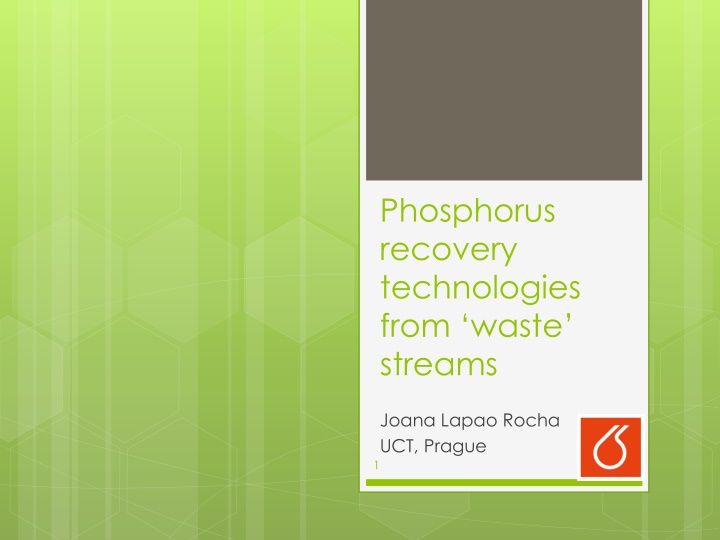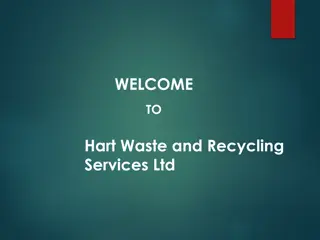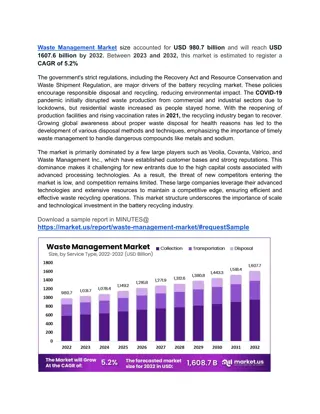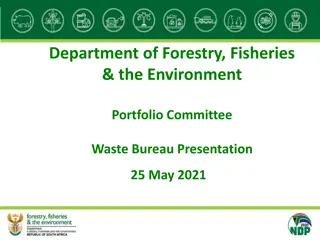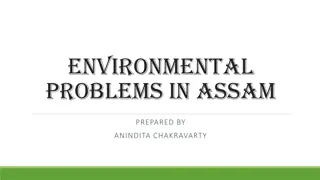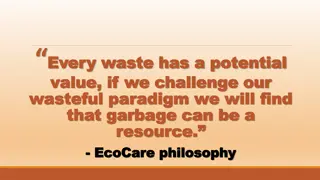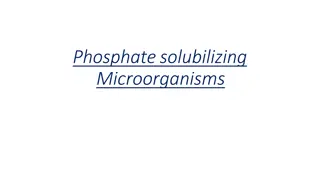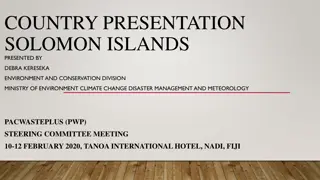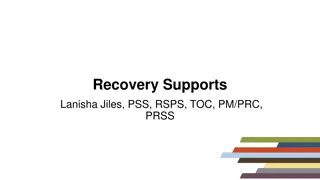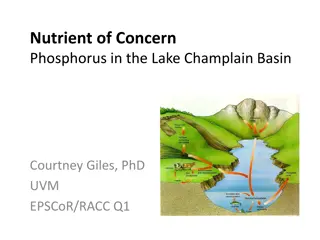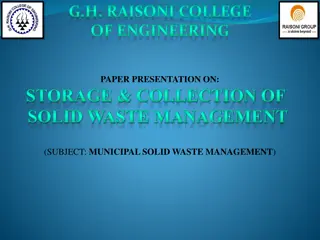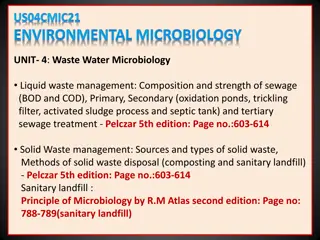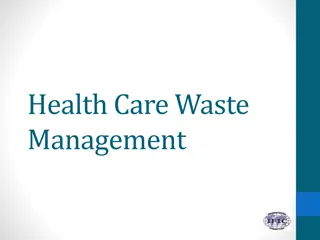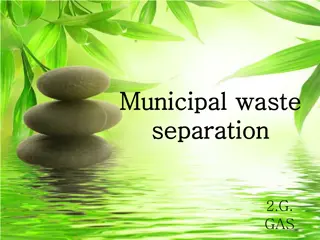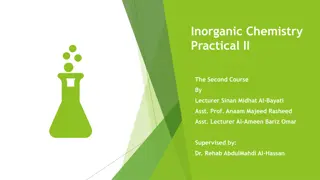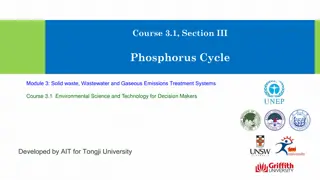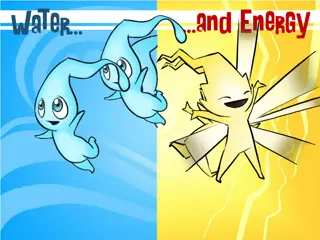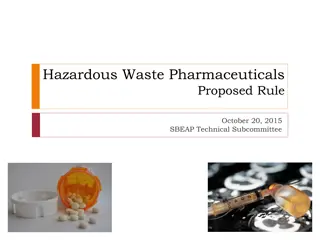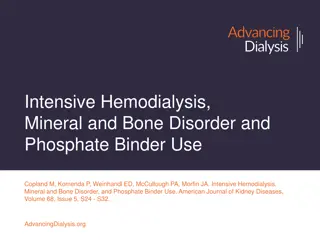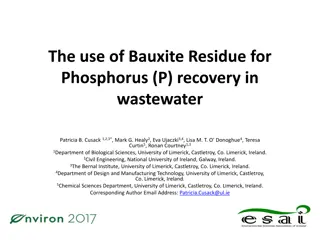Phosphorus Recovery Technologies from Waste Streams
Phosphorus is essential for food security and agricultural sustainability. This presentation explores various technologies for recovering phosphorus from waste streams, including meat and bone meal, manure, wastewater, struvite, sludge, and ash-dec technology. It also delves into the challenges and benefits associated with these recovery methods. The focus is on ensuring phosphorus availability for maintaining high agricultural yields while promoting environmental sustainability.
Download Presentation

Please find below an Image/Link to download the presentation.
The content on the website is provided AS IS for your information and personal use only. It may not be sold, licensed, or shared on other websites without obtaining consent from the author.If you encounter any issues during the download, it is possible that the publisher has removed the file from their server.
You are allowed to download the files provided on this website for personal or commercial use, subject to the condition that they are used lawfully. All files are the property of their respective owners.
The content on the website is provided AS IS for your information and personal use only. It may not be sold, licensed, or shared on other websites without obtaining consent from the author.
E N D
Presentation Transcript
Phosphorus recovery technologies from waste streams Joana Lapao Rocha UCT, Prague 1
2 Food Security Phosphorus is irreplaceable and impossible to synthesize Indispensable to maintain high agricultural yields Phosphate rock was added to the list of critical raw materials at EU level
3 Phosphate Rock Reserves
4 P Resources Governance Restriction on mineral fertilizers use Global and local agriculture towards sustainability Map P stocks and flows to identify bottlenecks and losses Ensure P recovery and reuse
5 P recovery technologies From meat and bone meal P (in % of DM) 10.5 (5.24-16.5) Bone meal Better for the use in acidic soils Meat meal 3.42 High plant P availability (0.30-4.74) Meat and bone meal 5.31 (2.21-9.62) Meat and bone meal ashes 14.02 (6.07-18.9) Ashes from monoincineration of MBM- high amounts of Ca and P
6 Manure Pros P in plant available form (inorganic form) Substitution of mineral fertilizers Cons High transportation costs Difficult to define proper application rate necessary to separate liq. from solid phase Risk of pathogens, odors Cost efficient To improve transportability and storage is beneficial to perform anaerobic digestion
7 Wastewater
8 Struvite Low recovery efficiency 30% Simple Cost effective Chemical precipitation Ca10(OH)2(PO4)6 or, MgNH4PO4
9 Sludge
10 Ash-Dec technology
11 Product Characterization 40-80% crystalline phases Plant availability dependent on proton supply and soil characteristics Presence of heavy metals ( dependent on the initial ash composition) usually in low concentrations
12 Leachphos technology
13 Product Characterization Amorphous 40%protonated Ca-P 60% free ortho-P and P loosely bound to Al Plant availability 70-100%, not dependent on the soil characteristics Presence of heavy metals in low concentrations
14 Conclusions For a sustainable governance of phosphorus is necessary to involve various stakeholders Phosphorus recovery can be done at diverse scales: households, farms, megacities wastewater is a suitable substitute of PR as a raw material
15 Thank you for your attention Rochaj@vscht.cz
